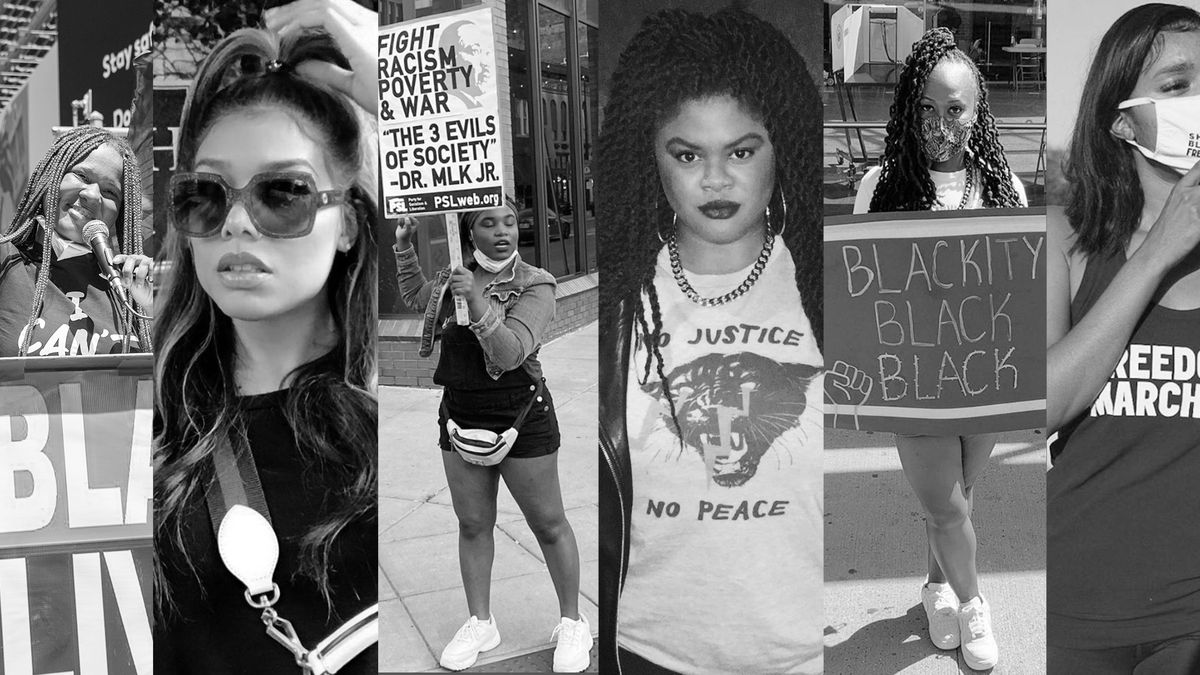The lives and legacies of Dr. Jane Elliott and Dr. Martin Luther King, Jr. are inextricably linked.
On April 4 1968, King was killed by the single bullet of a lone assassin as he stood outside Room 306 on the second-floor balcony of the Lorraine Motel in Memphis, Tennessee. The reverberations of that fateful day would be felt the world over, but it was the following day that would change Elliott’s life forever.
Paying homage to King, it was then that the white schoolteacher in the all-white town of Riceville, Iowa, devised an exercise to enable her third-grade students to experience first-hand what prejudice, discrimination, and racism felt like.
In what is now famously known as the “blue eyes, brown eyes” exercise, Elliott divided her class into two groups based on a characteristic over which they had no control: eye color. Blue-eyed students were placed in one group, and brown-eyed students in the other. Members of both groups were treated according to the color of their eyes.
On the first day, Elliott convinced the brown-eyed students that they were “better,” “smarter,” and “superior” to their blue-eyed counterparts and, as such, they were entitled to privileges such as more recess time and access to a water fountain. The next day, she reversed the roles.
Elliott was astounded by the results.
In a PBS documentary about her work entitled A Class Divided, she said: “I watched wonderful, thoughtful children turn into nasty, vicious, discriminating little third-graders.”
For decades, Elliott repeated the exercise with elementary school students, college students, and professionals around the world, consistently finding that participants would turn against each other for no other reason than the color of their eyes.
Today in 2020, Elliott still believes as she did back in 1968 that “white people keep feeling, thinking and talking this racist way until they’ve experienced some of the same treatment that people of color live with every day.”
At the time, the exercise was considered controversial, in part, because–for just a few short hours–it forced white people to experience a semblance of the pain Black people do. For instance, it wasn’t uncommon for white participants, who likely hadn’t experienced overt discrimination based on their skin color, to abandon the exercise in fits of rage, and sometimes even in floods of tears. Such was the perceived level of humiliation and powerlessness they experienced.
Overall, however, the exercise demonstrated that, if prejudicial, while discriminatory and racist behaviors can be learned, they can also be unlearned.
In the wake of the police killing of George Floyd on Memorial Day, archival clips of Elliott’s exercise began making the rounds on social media—thrusting her anti-racism work back into the spotlight it had occupied 52 years prior. Particularly relevant in this racially-charged climate, Elliott’s experiential exercise is a palpable representation of discrimination in action.
And more than five decades later, Elliott is still a force to be reckoned with.
At 86 years old, the pioneer of the anti-racism exercise is still in demand—and she’s as straight-talking, incisive (and quick-witted) as ever. Speaking from her home in the rolling plains and cornfields of Iowa, the former schoolteacher turned anti-racism educator hasn’t lost a step since she first hit TV screens in 1992 on The Oprah Winfrey Show.
Despite being universally recognized as the creator of the famed exercise, Elliott is quick to refute this. Instead, she only lays claim to having “adapted” it.
“I didn’t create the exercise. I learned it from Adolf Hitler,” she tells OprahMag.com matter-of-factly. “One way he decided who went into the gas chamber was by eye color. If you had a good, German name, but you had brown eyes, they made sure you went to the gas chamber, because they thought you might be a Jewish person who was trying to pass. They killed hundreds of thousands of people on the basis of eye color alone.”
Raised on a farm in northeast Iowa, Elliott was born in 1933—the same year Hitler came to power, and she often likens the current state of race relations in the U.S. to Hitler’s exploits in Europe from 1933 to 1945. In adapting the exercise, Elliott says her intention was that “anybody going through it would relate to what Jews went through then—and what Blacks are going through now.
“I wanted people to experience that and gain empathy. Not education, but empathy.”
But the uphill battle to defeat racism isn’t just about lack of empathy. It’s about economics. Prince Harry was recently quoted as saying: “When it comes to institutional and systemic racism, it’s there and it stays there because someone, somewhere is benefiting from it.” Elliott agrees. “Racism is profit-making behavior,” she says.
She adds: “Read Michelle Alexander’s book, The New Jim Crow—Mass Incarceration in the Age of Colorblindness. Thanks to people like Bill Clinton who started the ‘three-strikes-and-you’re-out’ nonsense, we put mostly young Black males in prison. They’re forced to work eight hours a day and, in many cases, they’re paid 20 cents an hour. It’s a new form of slavery. Make no mistake about this: it’s a way to make a lot of money.”
Whatever the reason for the perpetuation of racism, its harmful effects have long been well-documented. In 1969, the Joint Commission on Mental Health of Children acknowledged that racism was America’s “number one public health problem” among children. Tellingly, Elliott points out, “they didn’t say Black children. They said all children.”
She continues: “Thinking your skin makes you superior is absolutely ridiculous. To think somebody else’s skin color makes that person inferior is equally ridiculous, but much more harmful. Because if you think you’re right and everybody else is wrong and, like our current president, you can get enough people to agree with you, you can destroy people of color on a daily basis. We do that all day in this country.”
Fast-forward 51 years from the Joint Commission’s report to 2020. In July, CNN shared findings from a study that revealed that racial discrimination may increase stress, lead to health problems, and hamper the cognitive function of Black women. Why Black women in particular? Elliott believes it's “because their sons and husbands are in constant danger.”
“As has been amply demonstrated over the past few months, during wartime, we send Black men to fight in our wars and die. In peacetime, we make war on them in this country. Black women know that.”
Despite her scathing assessment of the state of US race relations, Elliott fervently believes that racism is easy to fix. She offers a two-part solution to the problem: the first is philosophical, and the second is practical. Step one: “Stop believing there’s more than one race. Realize that we’re all members of the same race. The human race.”
She adds that, from the age of five to 18, people aren’t educated, but rather “indoctrinated” to believe in the myth of white superiority. But any myth can be debunked and Elliott outlines the roadmap to destroy the myth of race using the same tool that was used to construct it—literature.
“I’d start by insisting that every child reads the book, The Color of Man, by Robert Cohen,” she said. “I’d also insist that every educator reads all the books listed in the bibliography on my website.”
Step two? “Change housing segregation practices.”
In an interview with Slate magazine, Richard Rothstein talks about his book, The Color of Law: A Forgotten History of How Our Government Segregated America. He rejects the idea that America’s metropolitan areas are ‘de facto’ segregated—that is, the product of private individuals’ choices about where to live. According to Rothstein, most residential segregation can’t be attributed to the private choices of homebuyers or even prejudices held by realtors and lenders—and the separation of many US neighborhoods has been at the core of federal housing policy for decades.
Elliott, too, believes that racially-segregated neighborhoods in the US are the product of ‘de jure’ segregation—residential segregation that is mainly a consequence decided by law rather than a matter of personal choice among residents. “Anybody who thinks all the residential segregation we have is de facto segregation is wrong. Believe me, this can be taken care of. We simply have to change these housing segregation practices.”
While Elliott shows no signs of calling time on her anti-racism activism, she does have her eyes firmly fixed on the future of the exercise that made her famous. She’s even contemplating passing the torch to some of her family members so they can follow in her footsteps—whether they choose to lead the exercise with third-grade students, college students, professionals or all of the above, as Elliott did.
“I have a daughter who would be good at leading the exercise, so she’s studying to do it. I also have three granddaughters who could lead it very well. Because they’ve listened to me a lot, they’ve learned some things that convinced them that a lot of what they learned is nonsense,” she said.
An essential part of the exercise, which Elliott says she “hates,” involves being unrelenting in her ridicule and humiliation of the “inferior” group—subjecting them to discriminatory statements like “brown-eyed people are better than blue-eyed people. This is a fact.”
According to Elliott, “white women have to lead the exercise, because people won’t listen to Black women. Coming from a man, no one is going to put up with the kinds of things I say during the exercise. They’ll take it from a woman. They’ll take it from a white woman.”
Ultimately, Elliott is shocked and saddened that the need for her anti-racism exercise is as pressing in 2020 as it was in 1968. For her, she says it’s a bit like watching the movie Groundhog Day, where the main character wakes up in the morning only to realize that he’s reliving the same day over and over again.
So what motivates Elliott to continue her anti-racism endeavors? “What motivates the racists to carry on?” she asked in response. “The racists carry on, so I carry on. When they stop, I will.”
For more stories like this, sign up for our newsletter.
Formerly an editor at Reuters, Kieron Johnson is a business reporter at BBC News. He is also a content consultant to emerging and established brands. A native of London, England, Kieron currently lives on a tiny island in the Indian Ocean with his wife, daughter and soon-to-be pet budgie (whose names also begin with the letter ‘K’).












